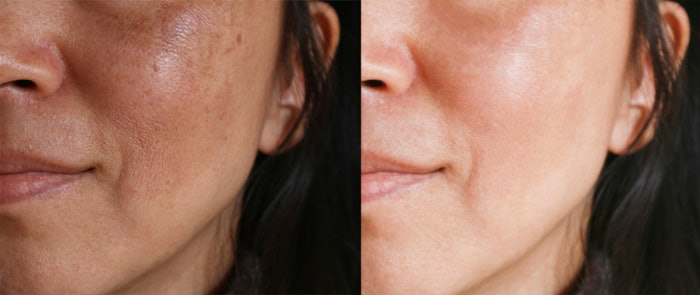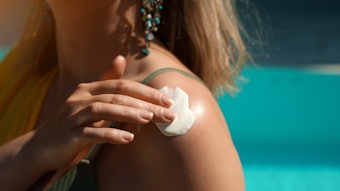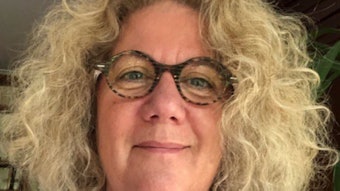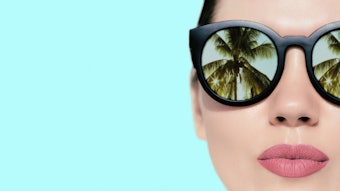
Recently, Global Cosmetic Industry asked authors Ecclefield and VanZetta of Validated Claim Support, an FDA-registered clinical testing lab, to discuss why all before/after imagery isn’t created equal, and what makes some systems/techniques less appropriate than others. Here, the experts shares their insights into the intentional and unintentional ways in which befores and afters can mislead the viewer.
(This story follows up our previous report, “Beauty Before-and-Afters: How Better Imagery, AI, Social Media and Testing Are Changing the Game.”)
There are many variables that come into play with before and after photography techniques prevalent in the beauty industry. That’s why it’s best to leave the imaging to the experts and rely on specialized data collection.
From a very general perspective, research specialists conduct clinical studies/trials. If you’ve ever been to the dermatologist for a routine procedure or observed befores and afters in a dermatologist’s office, you’ve experienced an expert in a scientific field who is dabbling in the art of photography. Unfortunately, lifelong experts in their respective fields generally are not also professional photographers; photography is a highly specialized field of its own.
In many cases, during skin care/cosmetic research, most of the data points are collected by clinical technicians and/or medical professionals. Many medical professionals have very particular, focused specialties that they’ve spent decades researching and honing. They’ll often be the first to admit when a particular symptom or condition is outside of their purview. But in practice, that won’t stop them from taking pictures in clinical studies.
In medicine, doctors and medical professionals rely on highly specialized imaging in medical research all the time—think ultrasound technicians and radiologists. In clinical research, specialization is very often muddied, and you’ll end up with the same technicians taking measurements like skin firmness or hydration, and then using out of the box imaging systems.
Even with a controlled laboratory and/or studio environment, there are many factors that can influence the perception of efficacy. We’re not talking about the obvious things like direct Photoshop/data manipulation, but rather altering conditions like lighting, expression and focus to provide different appearances.
Sometimes Digitally Certified, Unretouched Isn’t Enough
All of the images outlined in the case studies presented in this report are 100% unretouched other than cropping/alignment and they have the meta-data to prove it. That said, there are many other factors which can happen behind the scenes that impact the appearance of a participant, which should not be misconstrued as efficacy or improvement.
These participants may have been shot in a highly controlled studio with temperature/humidity at 72 degrees +/- 1 degree and 40% RH +/- 5%. Fixed distances to the participant and soft light boxes may have been used with a tripod-mounted camera and a custom studio chair with a headrest for reproducible imaging.
All of these sample images have been shot in the same studio, on the same participant, on the same day. There is no product involved, and no actual efficacy at play—just some studio tricks which many people wouldn’t necessarily look out for.
In the Cases 1 and 2 we’ll utilize facial expression variations, followed by Case 3, featuring focus/focal length manipulation, and finally Case 4 with some subtle lighting variability.
Case 1: Eyes Closed Versus Normal
Here, we’re highlighting the crow’s feet in this demonstration, and we’ve purposely left some of the corner of the eye visible.
 Case 1a: Eyes closed versus normal.Validated Claim Support/James VanZetta
Case 1a: Eyes closed versus normal.Validated Claim Support/James VanZetta
 Case 1b (cropped): Expression lines are a critical component of the appearance of crow’s feet, and simply opening/closing the eyes at varying levels dramatically changes their visibility.Validated Claim Support/James VanZetta
Case 1b (cropped): Expression lines are a critical component of the appearance of crow’s feet, and simply opening/closing the eyes at varying levels dramatically changes their visibility.Validated Claim Support/James VanZetta
Case 2: Squint/Smile
There are many other facial expression changes that can dramatically impact the appearance of crow’s feet and fine lines/wrinkles. In this instance, note the full-face image where it's extremely obvious, and then the close crop where it starts to become much less so.
 Case 2a: Full face squint/smile.Validated Claim Support/James VanZetta
Case 2a: Full face squint/smile.Validated Claim Support/James VanZetta
 Case 2b: Close crop.Validated Claim Support/James VanZetta
Case 2b: Close crop.Validated Claim Support/James VanZetta
Case 3: Normal Versus Out of Focus
These two images show an extremely similar underlying position, unlike the last two; however, in this case, the photographer altered the focus and depth of field for a subtle “blur.”
 Case 3a: Normal versus out of focus full face.Validated Claim Support
Case 3a: Normal versus out of focus full face.Validated Claim Support
 Case 3b (close crop): In this case, notice the subtle changes in the appearance of the skin’s texture and the pores. It’s just function of focus, and there is no mechanical change occurring here.Validated Claim Support/James VanZetta
Case 3b (close crop): In this case, notice the subtle changes in the appearance of the skin’s texture and the pores. It’s just function of focus, and there is no mechanical change occurring here.Validated Claim Support/James VanZetta
Case 4: Lower Light Half Power Demo
This demonstration brings another variable into play: lighting control. In this instance, with the full face image, it's harder to immediately discern where the manipulation might be.
 Case 4a: Lower light half power full face.Validated Claim Support/James VanZetta
Case 4a: Lower light half power full face.Validated Claim Support/James VanZetta
 Case 4b (crop): If we were to crop in on just the neck region, it would appear that there is a huge change in the appearance of the folds and skin texture. In reality, all we’ve actually done is add a subtle lower soft light to the mix coming up from below the face.Validated Claim Support/James VanZetta
Case 4b (crop): If we were to crop in on just the neck region, it would appear that there is a huge change in the appearance of the folds and skin texture. In reality, all we’ve actually done is add a subtle lower soft light to the mix coming up from below the face.Validated Claim Support/James VanZetta
 Case 4c (eyes crop): If we crop into the eye area, now you can clearly see the reflection of the second soft light which may not have been readily obvious before.
Case 4c (eyes crop): If we crop into the eye area, now you can clearly see the reflection of the second soft light which may not have been readily obvious before.
Best Before-and-After Practices for Beauty Brands
There are many variables that can and should be controlled, and good studios will always provide both a full-face image and close crops. Groups like HSN/QVC will require both—if you only see a close crop in online advertising, you may not be getting the full picture. Don’t accept only close crops! Here are some key considerations for brands:
- Wherever possible, imaging should be done with the eyes open. Not only does this provide a more controllable, natural expression, but it also provides a secondary variable check for lighting intensity. The eyes can’t lie in this case.
- Wherever possible, nothing should touch the participants’ faces. Positioning devices cause variable levels of pressure on the face, which can dramatically impact the appearance of expression.
- Whatever variables can be controlled should—lighting, positioning, temperature, humidity, positioning, etc. Ask for specifics as you seek out a before-and-after lab.
- Professional photographers are going to shoot better photos than other less trained humans. Ask for the CV/resume of the photography team specifically, and/or studio specifications.
- Don’t skimp. As they say, a picture is worth a thousand words. If you won’t settle for the cheapest ingredients and/or packaging for your hero product, you also shouldn’t necessarily go with the cheapest imagery quote. This is one of those areas where you have one opportunity to convince your potential consumer that your product really works: make it count.











